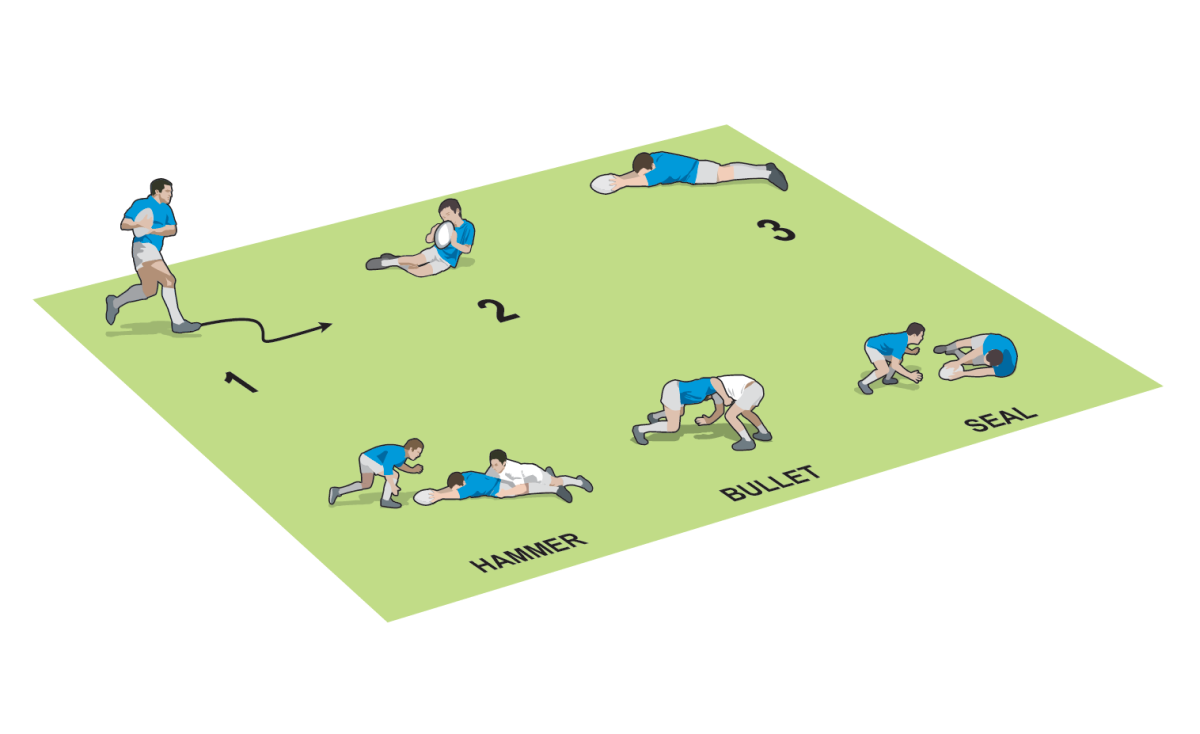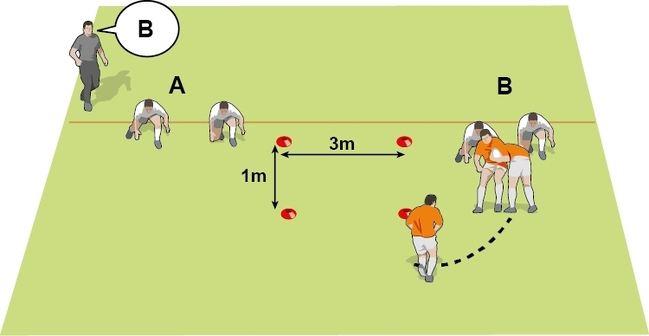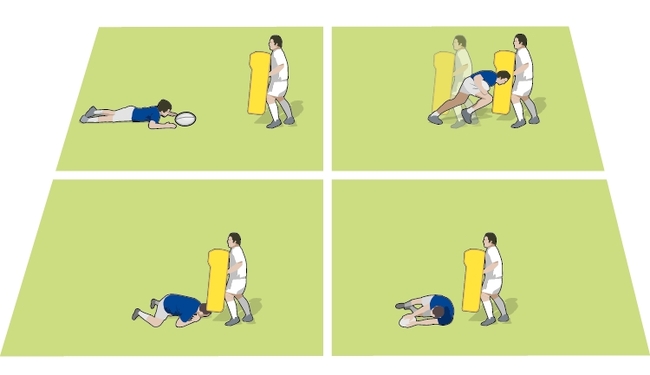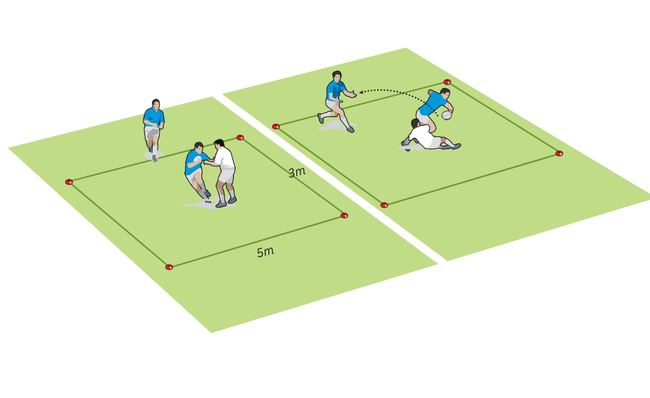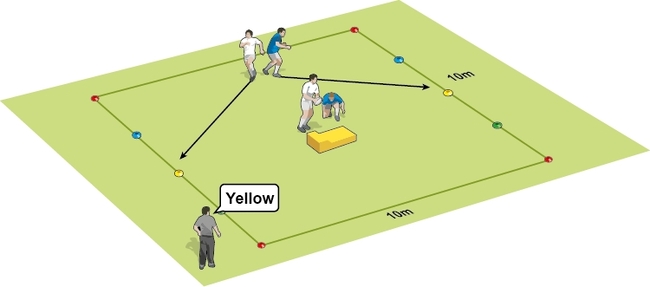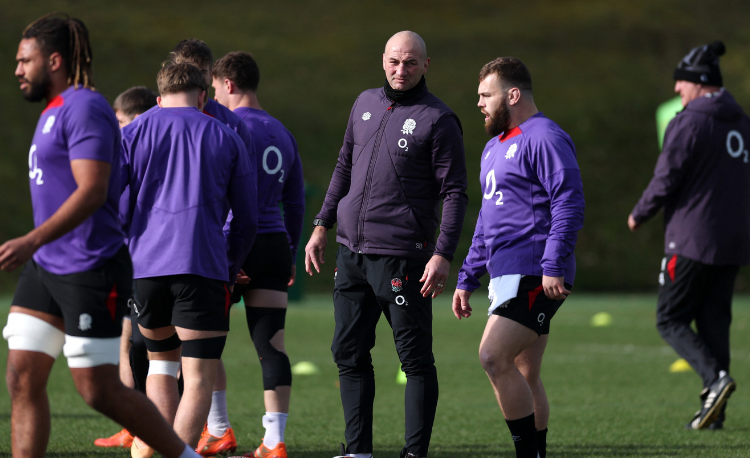Quick ruck ball: Create a mindset and system
The elite teams all have defined player roles at the ruck. ARU L3 coach JONO FARRELL provides a guide to allow you to develop skills required for quick ball.
When it comes to coaching the breakdown and management of ruck speed, the following methodology helps when preparing your sessions.
It is all about creating and developing the Mindset, the Skills and the System.
I have found that my players respond very well to sessions which contain each of the above elements, and drills which clearly have these themes as their base.
Managing ruck speed
The ultimate objective is to create quick ruck ball through good individual skills and efficiency of arriving support players.
This is a process and will require players to be educated through the three themes below.
1 - Attack the ’face’ and then the ’space’. Get to the edge of the defender, but keep hips square.
2 - Leg drive before going to ground
3 - Pencil placement or jack-knife. Strong top hand on ball.
HAMMER - Get to the tackler quickly. Separate the tackler from the ball carrier if they are on their feet.
BULLET - Win the race for the space. Win the shoulder battle – low to high. Don’t let the threat reload.
SEAL - Deal with any remaining threats. Protect the ball OR pick and go OR pick and pop to half back.
The Mindset
What is the mindset required to create quick ball when on the attack?
- Go forward when carrying – gain line is key.
- Urgency to get the support players to the tackle contest first.
- Know roles as arriving support players to avoid inaccuracy and overcommitting.
The Skills
What skills are required to generate quick ruck speed?
- Dominant ball carry
- Effective ball placement and security
- Then HAMMER (first support player, tackle the tackler), BULLET (effective clean), SEAL (decision-maker).
The System
The tactical application of the skills under pressure.
- How do we test the skills listed above in a realistic tactical situation under pressure?
Coaching ruck-speed management
It is important to always create the right mindset so players know what they must be thinking in order to execute under pressure.
The mindset we are after relates to:
Accuracy: From the ball carrier; arriving players executing their roles accurately
Urgency: From the first three arriving support players
Role awareness: What is my role as a ball carrier? Who will be the bullet? Who will be the seal (lock down back of breakdown, pick and play, pick and pop to arriving halfback)?
Start the session with a game of touch, with special rules that will assist in developing the appropriate mindset.
The games can be 6–8 minutes long and focus on one, or multiple, mindsets. These will transfer to what is being focussed on in the skills and tactics section of the session.
Examples of some of the special rules would be, for the attacking team to retain possession in a game of unlimited touch...
- Ball carrier must get to the edge of the tagger, pre-tag, and shift the ball across their chest away from the tag, executing a perfect place, either north/south or jack-knife.
- Hammer v Hunt - attacking team must get their first arriving player to the ball carrier before the opposition player does.
- Action and communication of breakdown process - attacking team must get three players past or over the ball in order of hammer, bullet, seal. Players have to be communicating these roles throughout to maintain possession.
These games of touch help to lay the foundations of the mindset and set the tone for the remainder of the session.
Related Files
Newsletter Sign Up
Coaches Testimonials

Gerald Kearney, Downtown Las Vegas Soccer Club

Paul Butler, Florida, USA

Rick Shields, Springboro, USA

Tony Green, Pierrefonds Titans, Quebec, Canada
Subscribe Today
Be a more effective, more successful rugby coach
In a recent survey 89% of subscribers said Rugby Coach Weekly makes them more confident, 91% said Rugby Coach Weekly makes them a more effective coach and 93% said Rugby Coach Weekly makes them more inspired.
Get Weekly Inspiration
All the latest techniques and approaches
Rugby Coach Weekly offers proven and easy to use rugby drills, coaching sessions, practice plans, small-sided games, warm-ups, training tips and advice.
We've been at the cutting edge of rugby coaching since we launched in 2005, creating resources for the grassroots youth coach, following best practice from around the world and insights from the professional game.
